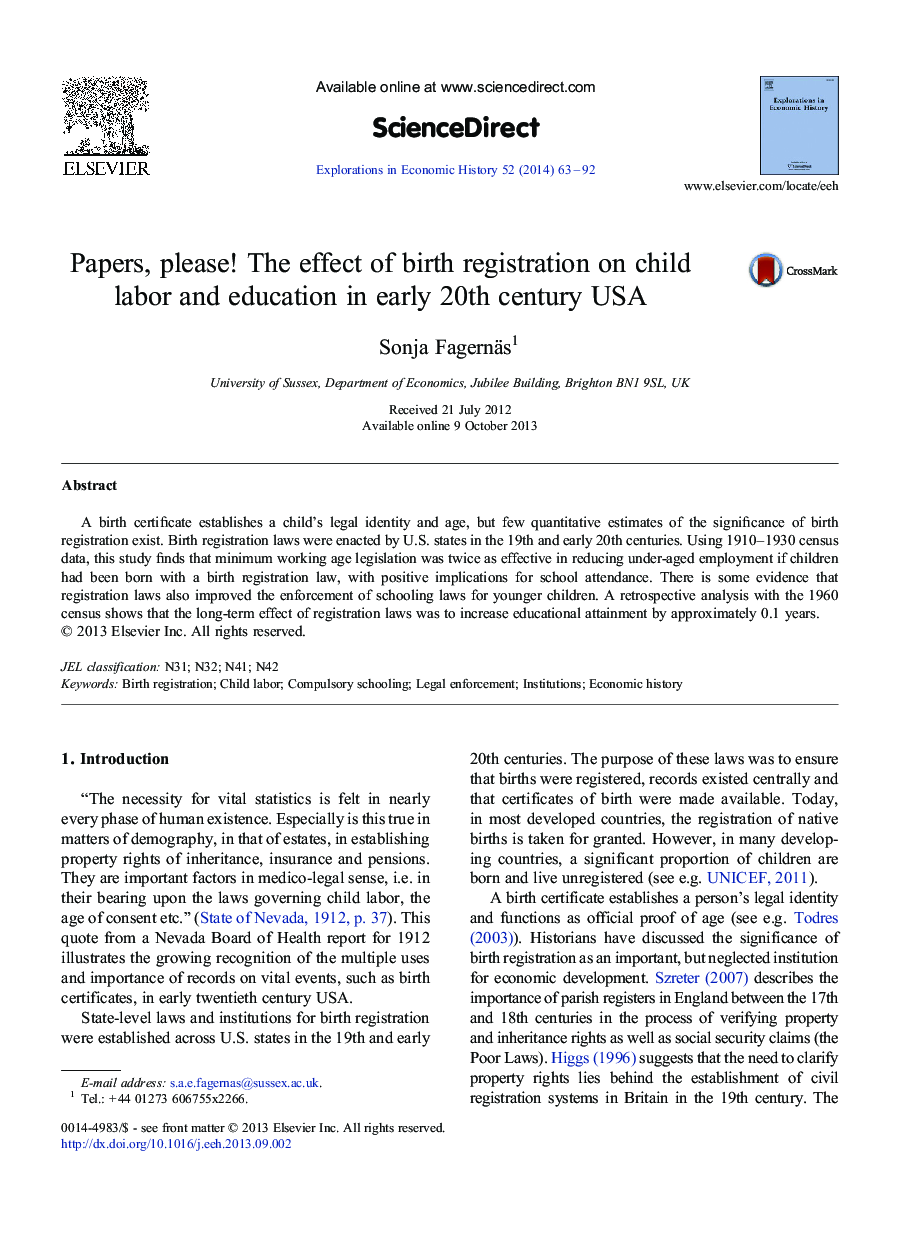| Article ID | Journal | Published Year | Pages | File Type |
|---|---|---|---|---|
| 5068761 | Explorations in Economic History | 2014 | 30 Pages |
â¢Birth registration laws were enacted by U.S. states between 1841 and 1925.â¢Effects on the enforcement of child labor and schooling laws are studied.â¢Birth registration laws doubled the effectiveness of minimum working age laws.â¢Birth registration improved the effectiveness of schooling laws to some extent.â¢The long-term effect was to increase educational attainment by around 0.1 years.
A birth certificate establishes a child's legal identity and age, but few quantitative estimates of the significance of birth registration exist. Birth registration laws were enacted by U.S. states in the 19th and early 20th centuries. Using 1910-1930 census data, this study finds that minimum working age legislation was twice as effective in reducing under-aged employment if children had been born with a birth registration law, with positive implications for school attendance. There is some evidence that registration laws also improved the enforcement of schooling laws for younger children. A retrospective analysis with the 1960 census shows that the long-term effect of registration laws was to increase educational attainment by approximately 0.1Â years.
